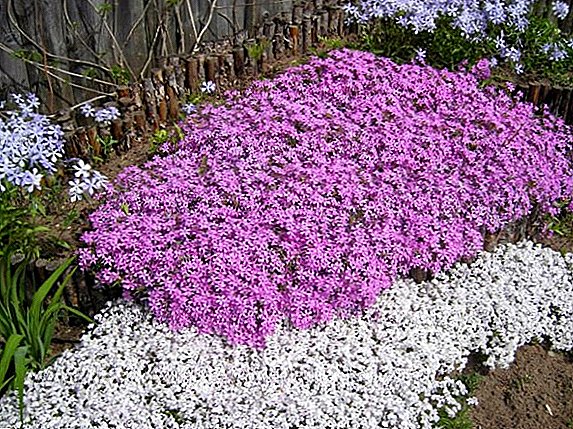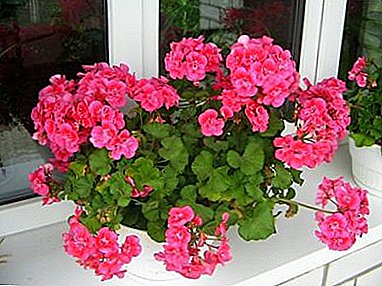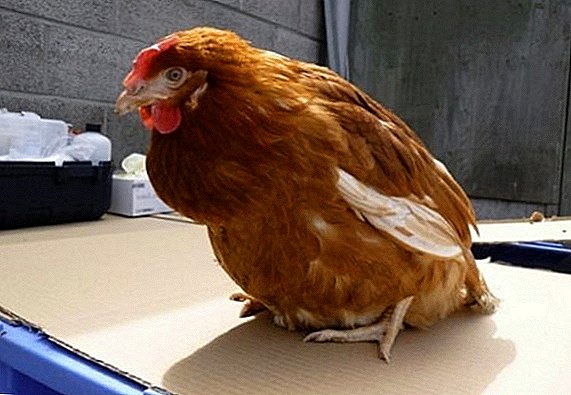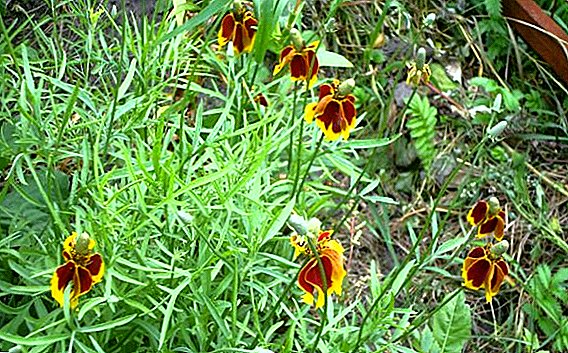
Savory and Thyme - these plants are often confused with or considered as one. The reason for this confusion in the similar names of cultures.
In fact, the plants are different, but they belong to the same family (Lambs). What are the differences and features of savory mountain? We will understand what it is.
Also from this article you can find out the description of savory, its history and geography of habitat. Read more about the benefits and harm of savory. We will tell you how to grow savory and care for it, what diseases and pests can be.
Detailed botanical description
 Mountain savory is one of the most famous among perennial species.. This is a lush semi-evergreen shrub. It reaches a height of 45-50 cm. It has a pronounced aroma - spicy aromatic herb. Included in the family Luminous (Sponge Flowers).
Mountain savory is one of the most famous among perennial species.. This is a lush semi-evergreen shrub. It reaches a height of 45-50 cm. It has a pronounced aroma - spicy aromatic herb. Included in the family Luminous (Sponge Flowers).
Latin culture name - Satureja montana, English - mountain savory. In our country, the plant is also known by other names - winter savory or alpine savory.
Mountain savory is a perennial culture. In one place under suitable conditions lives 4-5 years. Differs in slow growth. In the first year only vegetative organs develop, flowering begins next year. The flowering period is long (August-October).
Appearance
The structure of the bush differs depending on the region of habitat: in the south it is branchy shoots reaching 50 cm in height, in the north - branching is weakly expressed, the plant is lower.
Features of the appearance of culture:
- Leaves linear-lanceolate form, have a light glossy shade.
- The flowers are in the leaf axils. In 1 sinus 3-7 pcs.
- The flowers are small, most often white, but there are purple.
- Flowers form a loose elongated inflorescence.
- It has fruits that fall into nuts.
- Seeds are small, black-brown, egg-shaped.
History and geography of habitat
Mountain savory was discovered a long time ago. Even in ancient Rome, people believed that this plant has magical properties. Savory braided in wreaths that were supposed to protect from the evil eye, to clear the mind. It was also believed that such a wreath is a sign of a noble family. Natural habitat of savory mountainous Southern Europe (Balkans, southern France, Spain) and Asia Minor (Turkey, Lebanon, Syria). It is artificially cultivated in the warm regions of Eurasia.
Differences from other types and varieties of plants
| View | Differences |
| Mountain savory |
|
| Garden savory |
|
| Savory kondari |
|
| Savory Garden Gnome |
|
| Savory citron |
|
Benefit and harm
 The benefits of plants due to its composition. The aerial part contains essential oil, its main component is carvacrol. Savory greens are rich in vitamins, phytoncides, and minerals. The plant is actively used in traditional medicine.
The benefits of plants due to its composition. The aerial part contains essential oil, its main component is carvacrol. Savory greens are rich in vitamins, phytoncides, and minerals. The plant is actively used in traditional medicine.
- It is recommended to drink with problems with digestion, enteritis, vomiting and colitis.
- Greens of savory mountain relieves pain, swelling and irritation after insect bites.
Savory has useful properties:
- disinfectant;
- astringent;
- diuretic;
- sudorific
But to take this plant "medicine" is allowed in the absence of allergy and idiosyncrasy.
How to grow?
Reproduction is carried out by seeds or seedlings.. When growing from seed, it is important to pay attention to the following aspects.
- Plot to choose without weeds, protected from the north wind, sufficiently heated.
- Sowing in early spring - after the snow melt and the minimum warming of the soil. Most often this is the beginning of April.
- Depth for seeding is no more than 1 cm.
- The distance between crops - 10-15 cm.
- For even sowing, seeds can be mixed with sand.
- Cover bed with non-woven material. Water in 2 days.
- Shoots should appear in 12-15 days.
- After the greens are stronger, you need to thin them.
Another way is growing from seedlings.
- It is necessary to sow mountain savory for seedlings in March.
- Before sowing, the seeds should be kept for 1-2 days in a damp cloth, then dried.
- The seed is laid at a depth of 0.5-1 cm, distance - 3-4 cm.
- Cover the crops with film, spray the ground.
- Shoots appear after 9-11 days.
- Planted in a permanent place at the age of 40-45 days.
How to care?
 The following are the basic parameters required in the process of care.
The following are the basic parameters required in the process of care.
- Temperature. Optimum performance - 20-27 degrees. Does not tolerate drafts.
- Shine. Requires good lighting. Loves the sun and direct sunlight. In a dark place may dry out.
- Top dressing. It needs nutrient fertilizers. You can spill bushes with a diluted Growth solution 2-3 times per season. If the soil is fertile, fertilizer is not required.
- Loosening. To do after watering. So that the soil is not compacted, it must be mulched.
- Weeding. Be sure to timely remove weeds that obscure the seedlings of savory.
- Humidity. A suitable indicator - 45-55%. Spraying the plant is not necessary (or carried out infrequently).
In most regions of our country mountain savory must be sheltered for the winter. Shoots need to pile up and cover with improvised material - leaves, straw. In areas with harsh winters, savory must be dug, transplanted into pots and kept in the basement.
Diseases and pests
Diseases and insect parasites are identical to those of the savory garden. Of the most frequent diseases - rust, of parasites - aphid. Upon detection, timely spraying of chemicals is required.
So, mountain savory - a perennial shrub. In natural habitat found in hot areas. Cultivation in our country is permissible while providing the plant with a warm area protected from drafts. Mountain savory has wide application: from medicine to cooking.












